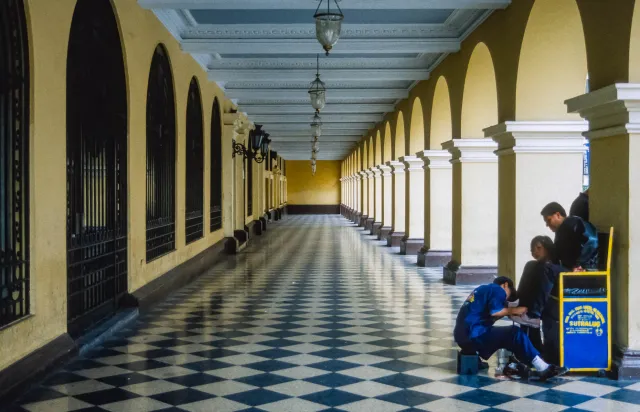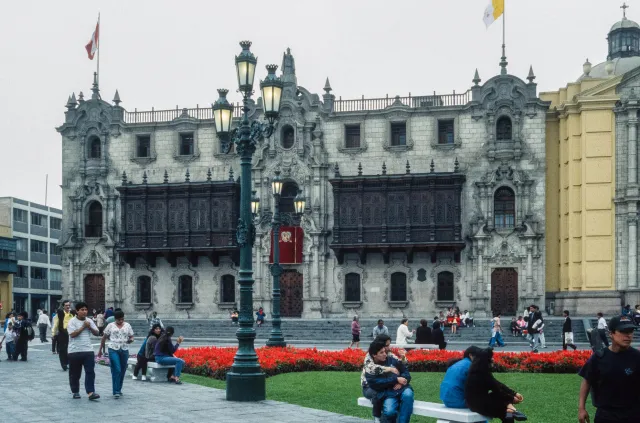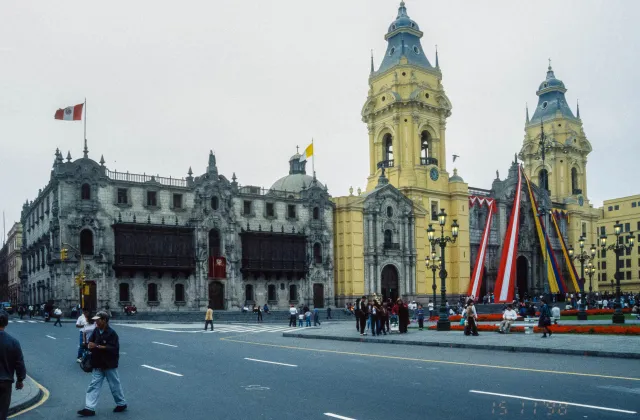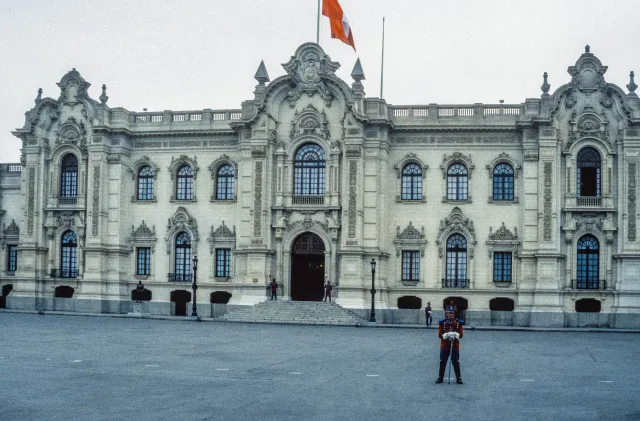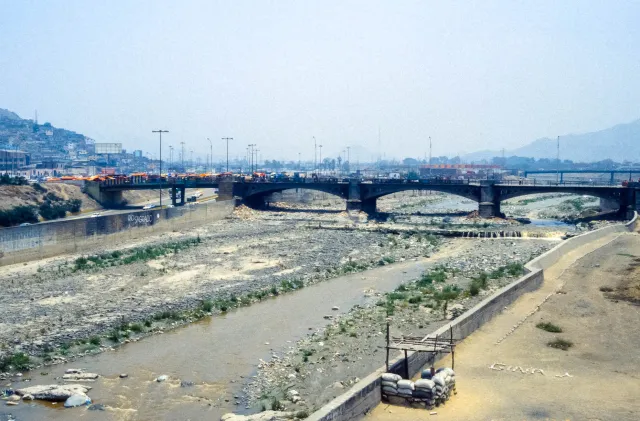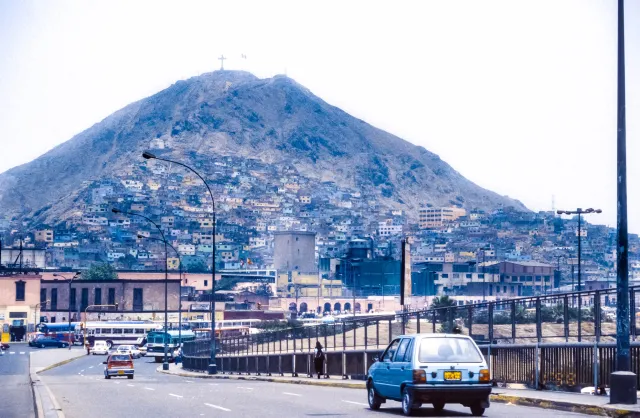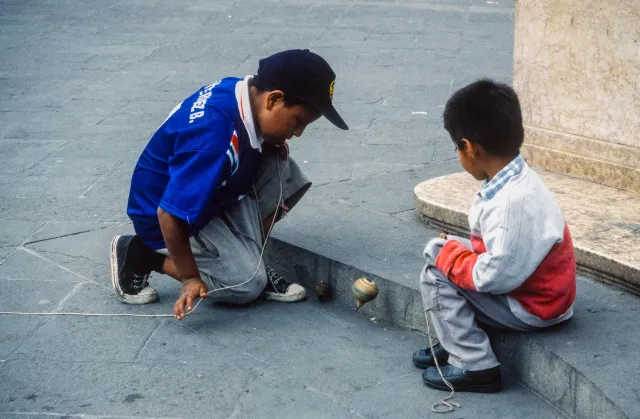Continent or ocean
Country
Region
The name of the capital of Peru has indigenous roots - it may date from the Jaqaru word lima, which means "yellow flower". A second source variant, on the other hand, takes into account the Quechua word rimaq, which could be translated as "speaker" and which also names the river of Lima, Rímac (Quechua: Rimaq).
Founded in 1542 by the viceroyalty of Peru through Spain, Lima became the capital and residence of the viceroy. During the 16th and 17th centuries Lima was the religious, economic and political center of the Spanish colonies of South America. The diocese of Lima was raised in 1546 to the archdiocese and metropolitan seat. 1551 was founded with the University of San Marcos, the first university on the American continent.
Picture 1: Shoeshine in Lima
Picture 2: The Bishop's Palace of Lima at the central Plaza Mayor is the seat of the Archbishop and Cardinal of Peru and is one of the most beautiful buildings in the city with its imposing granite façade.
Picture 3: The Lima Cathedral on Plaza Mayor is one of the most magnificent buildings of the colonial old town. Here is u.a. the tomb of the notorious Spanish conqueror Francisco Pizarro. On January 18, 1535 Lima was founded by him under the name Ciudad de los Reyes (City of Kings) on a native settlement on the south bank of the Rimac River.
The government palace in Lima exists since the year the city was founded in 1535 - but in different forms. It was built on a Huaca, a sanctuary of the chief Taulichusco in the Rímac Valley.
Picture 5: On Lima's streets
Picture 6: Lima's poorer quarters
Picture 7: Lima's poorer quarters
Picture 8: Lima - children play with spinning tops
Picture 9: Restaurant on Lima's Pacific coast

